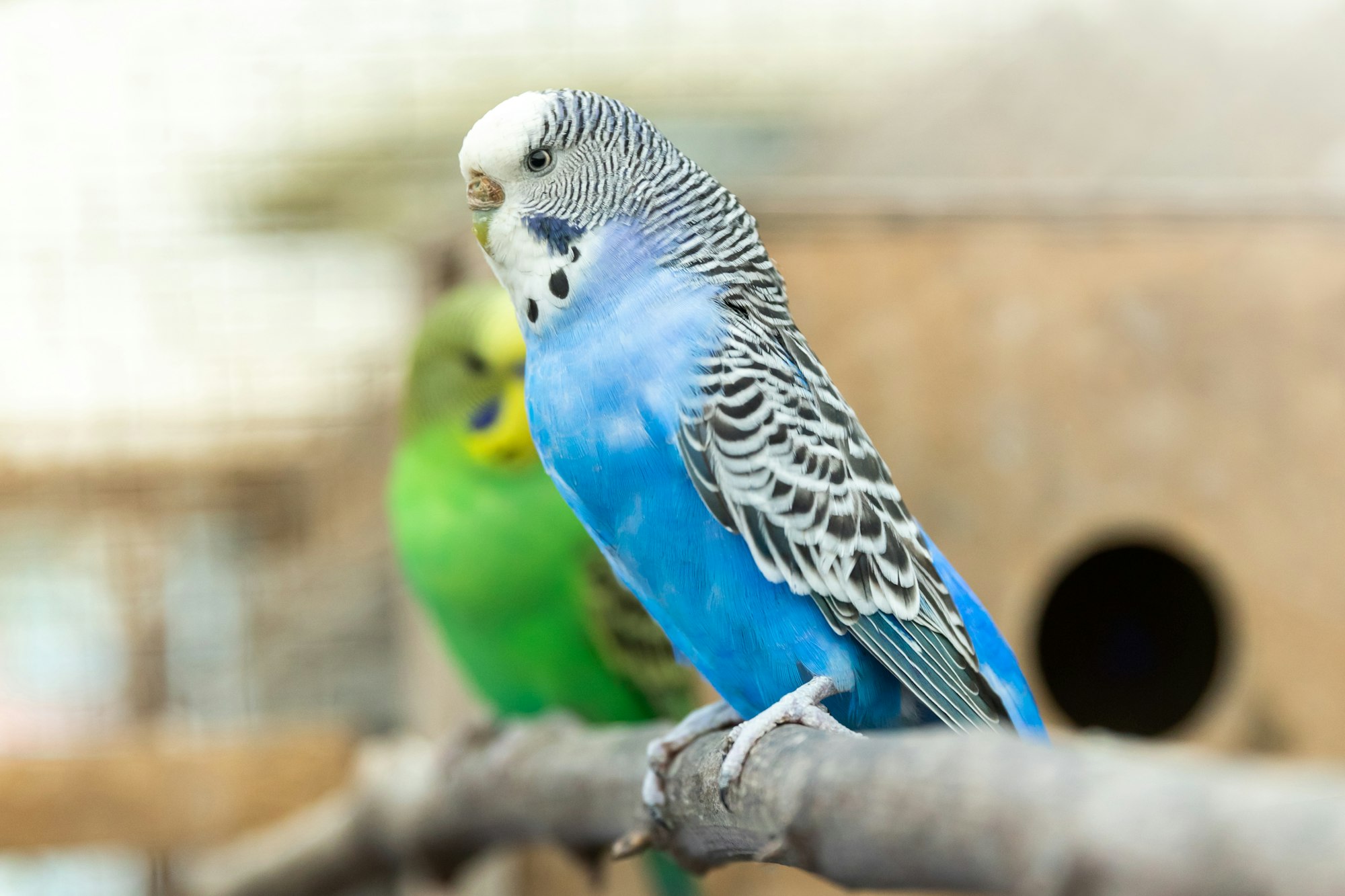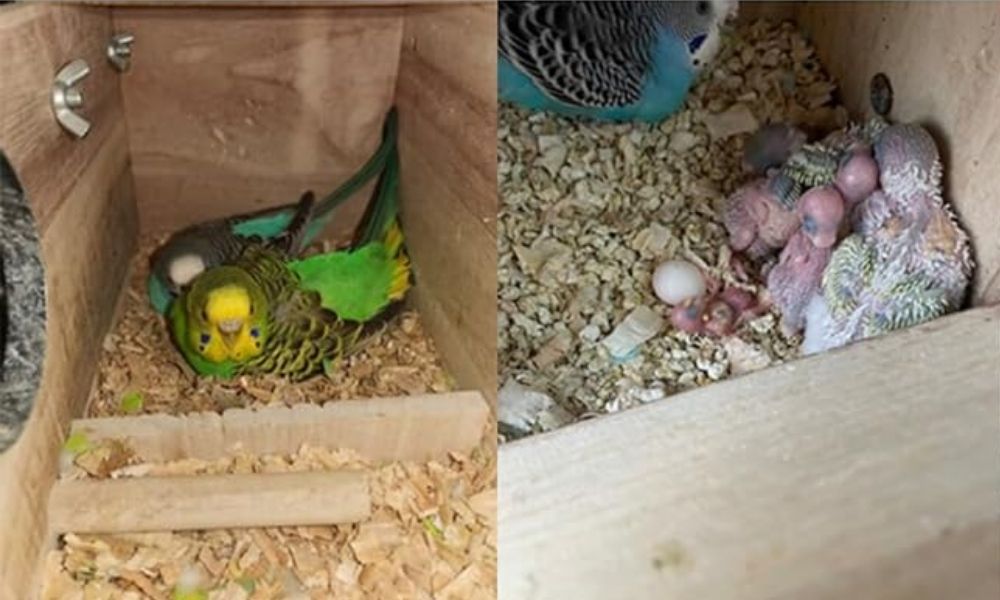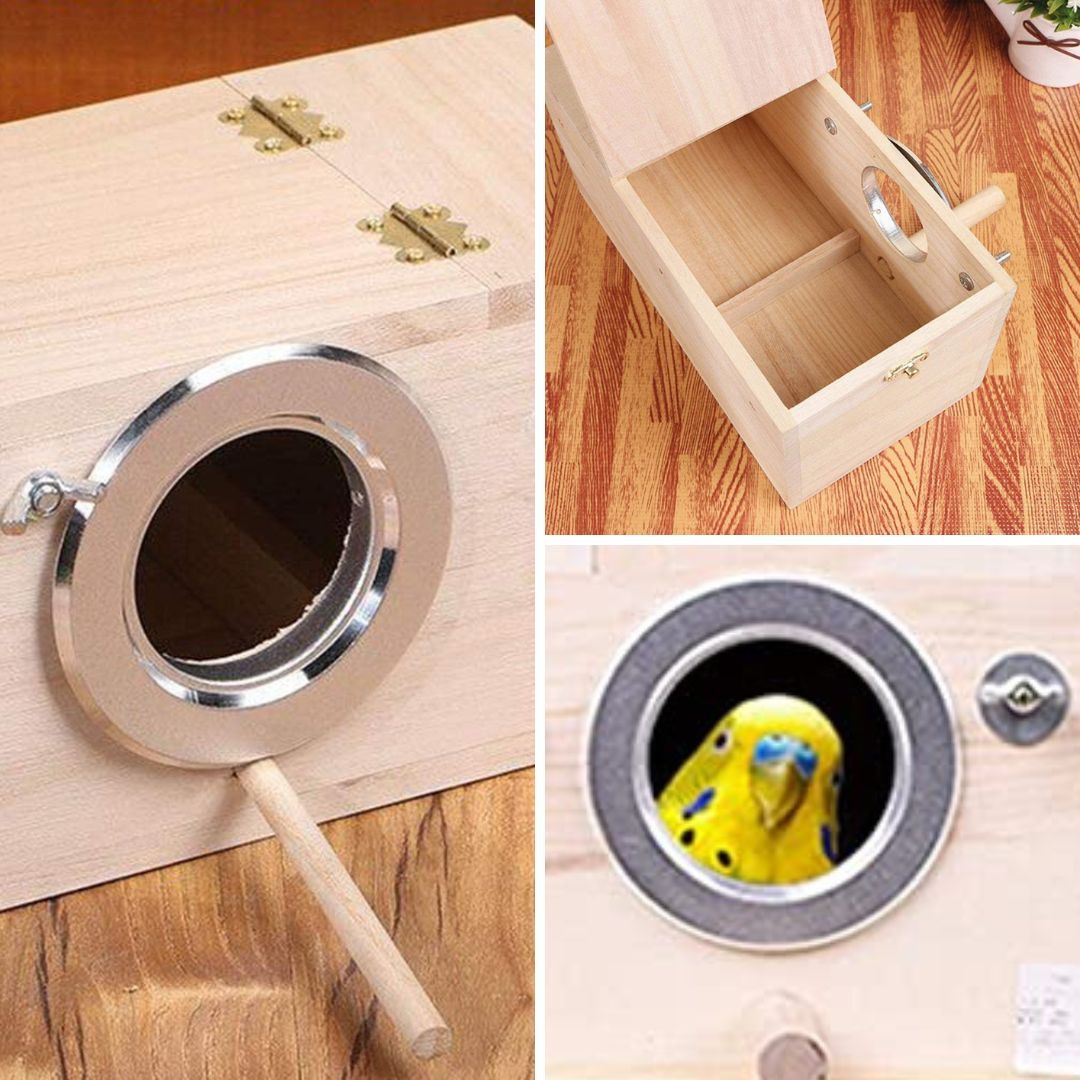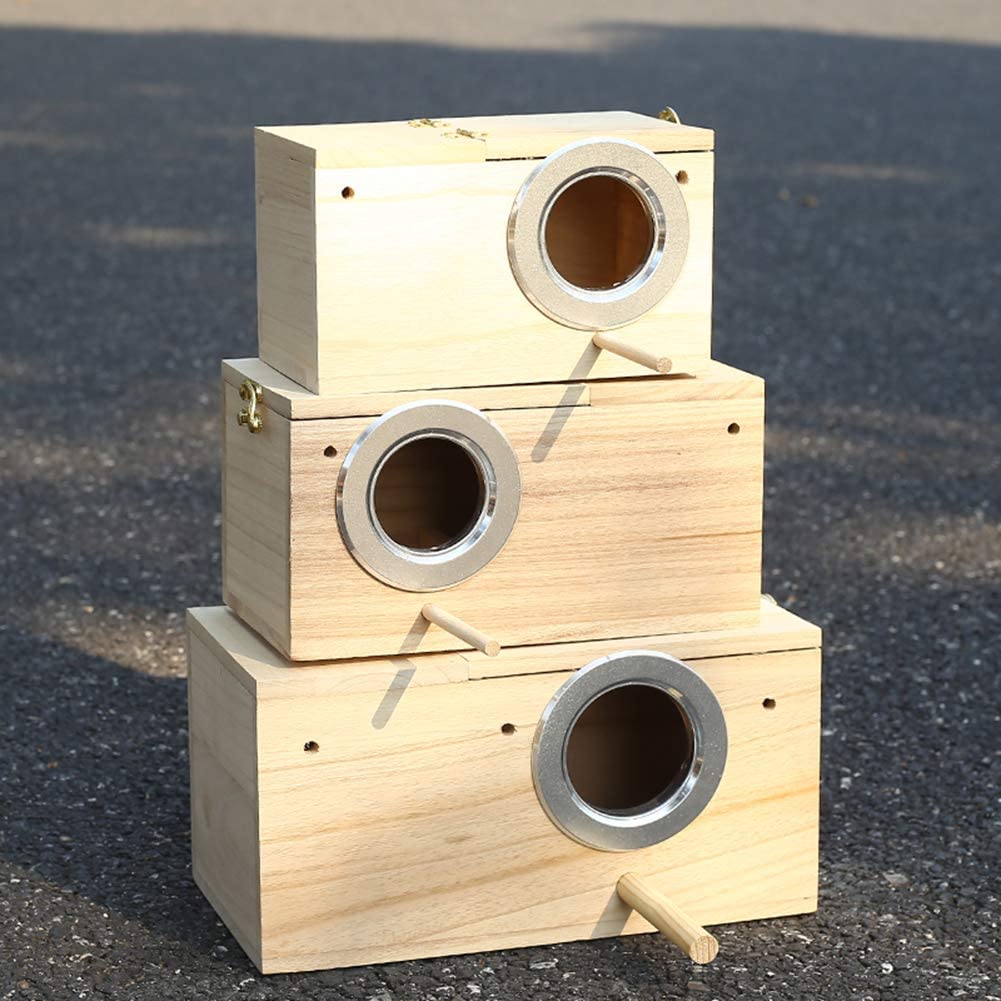Parakeet Nesting Box: How Nesting Boxes Benefit Parakeets
Today, we are going to be talking about how nesting boxes can benefit your parakeet Let us show you how a nesting box can make your bird happy and keep it healthy.

Parakeets are popular pet birds, beloved by many bird lovers. If you have a parakeet in your home, you may be wondering what you can do to make them feel more comfortable and safe. One of the best things that you can do is to provide them with a nesting box, as these boxes offer numerous benefits for parakeets. If you choose to breed parakeets, you should be prepared to care for the baby birds.
As a parakeet owner, it is important to ensure that your bird can engage in these natural nesting behaviors to keep them healthy and happy. One way to do that is to provide them with nesting boxes. In this blog post, we will explore the reasons why nesting boxes are beneficial for parakeets.
Safety and Security
Nesting boxes give parakeets a safe place to hide when they feel threatened or scared. For example, if they sense the presence of a predator or hear loud noises from an unknown source, they can retreat into their nesting box until the threat has passed. This feeling of safety and security is essential for any pet bird’s well-being, so providing them with this extra layer of protection is something every bird lover should consider doing.
A Sense of Comfort
Parakeets also appreciate the comfort that nesting boxes provide them with. The structure of the box gives them something solid to sit on and provides insulation from both the cold and heat, which helps to keep them warm in colder climates and cool in hotter climates. Additionally, since the walls create a cozy atmosphere inside the box, it can help your parakeet feel even more secure when they are inside it.
Encourages Breeding Behavior
For those looking to breed their parakeets, a specific breeding cage is necessary along with nesting boxes to encourage breeding behavior. Younger parakeets should not be allowed to breed before at least 10 months old to ensure they can be a good parent. Since these birds tend to be very protective over their eggs or chicks (especially when bred in captivity), having a dedicated nesting area helps ensure that they will stay away from other birds while still being able to watch over their young ones from afar—ensuring that everyone stays safe!
Safe and comfortable space
Nesting boxes provide a safe and comfortable space for parakeets to lay their eggs. Without proper nesting boxes, parakeets may lay their eggs on the cage floor or any other unsuitable surface, which puts the eggs at risk of breaking or becoming harmed. With a nesting box, parakeets can lay their eggs in a soft and warm environment, increasing the chances of successful incubation and hatching. This also reduces the risk of potential injuries to both the eggs and the parent birds.
Encourages natural behavior
In addition to breeding behavior, nesting boxes also encourage other natural behaviors in parakeets such as foraging and nesting. This helps to keep them mentally stimulated and engaged, preventing boredom and potential behavioral issues. In the wild parakeets breed in holes in trees. To have a higher success rate in your breeding ambitions you will have to stimulate this somehow. Nest boxes made out of wood are a perfect substitute for tree hollows, which are the natural nesting environment for parakeets. This way, your parakeets can engage in their natural behaviors even when living in captivity.
Easy to clean
Nesting boxes are also easy to clean, as most come with removable trays or doors for convenient access. This makes it easier for owners to maintain a hygienic environment for their parakeets and ensure that the nesting box remains a safe and healthy space for the birds and their young.
Multiple nesting boxes for multiple birds
Having multiple nesting boxes in a shared living space allows for each parakeet to have their own dedicated area, reducing potential conflicts between the birds. This is especially important during breeding season when parakeets can become more territorial and protective over their nest and eggs. Providing enough nesting boxes for all parakeets in a shared space promotes harmony and reduces stress among the birds.
Versatile for different breeds
Nesting boxes come in a variety of sizes and shapes, making them suitable for different breeds of parakeets. Some may prefer round or oval-shaped boxes while others may feel more comfortable in rectangular or square shaped ones. Providing options allows each bird to choose their preferred nesting box.
Stimulate breeding
Nesting boxes can also help to stimulate breeding in parakeets. When it comes to breeding, parakeets prefer to have a private and cozy space for courtship and mating. Nesting boxes provide an ideal environment for parakeets to engage in these activities, ultimately resulting in successful breeding.
Prevent egg-laying complications
Nesting boxes can also help to prevent egg-laying complications in parakeets. Without a nesting box to lay their eggs in, parakeets may develop egg-laying difficulties or even become egg-bound. These conditions can be very dangerous and potentially life-threatening for the parakeet. By providing a nesting box, you can prevent such complications and ensure the health and well-being of your pet bird.
Provide entertainment
Lastly, nesting boxes provide entertainment for parakeets. Parakeets love to chew and explore their environment. By providing a nesting box, you give them a new item to investigate and interact with, which can help keep them entertained and happy.

Parakeet Nest Box FAQs
Do parakeets need a nest box?
Yes, parakeets benefit greatly from having a nesting box in their enclosure. It provides them with a safe and private space for breeding, reduces stress, and can prevent egg-laying complications. If you want to breed parakeets the best way to do this is by providing your breeding pair with a nest box.
What size should a parakeet nest box be?
The size of the nesting box will depend on the breed and size of your parakeet. As a general rule, the box should be large enough for the parakeet to comfortably enter and move around in, but not too big that it becomes a burden to maintain. Typicall nest box is made from solid hardwood with a carved indent on the inside floor to prevent eggs from rolling and double side opening panels for easy cleaning after nesting season.
What do you put in a nest box for parakeets?
Parakeets don't need much to breed in the wild, and a nest box with a dry floor area, lined with a soft nesting material to lay their eggs on will be fine. It is best to keep the nesting material natural and non-toxic. Shredded paper, coconut fiber, or wood shavings are all suitable options. Avoid using newspaper or any other glossy or slick materials that can be harmful if ingested. You can consider to pu tin concave inserts for your nesting box. They help prevent splayed legs, a condition that sometimes occurs when chicks have been standing on hard, flat floor for long time. You can get a lot of accessories as well as new nest boxes for your budgies on Amazon. Members typically receive free shipping on select orders over $49.00. Please read through to find out more by clickng the picture below.

Should I move parakeet eggs to nest box?
If you notice that your female parakeet has laid eggs outside of the nesting box, it is best to carefully move them into the box. This will provide a safe and secure environment for the eggs to hatch and for the mother to care for her young.
How often should I clean a parakeet nest box?
Cleaning frequency will depend on how frequently the parakeet uses the nesting box and how quickly it becomes soiled. It is recommended to check and clean the box at least once a week, removing any debris or excess nesting material and replacing it with fresh material.
What are the dimensions of a parakeet nesting box?
The dimensions of a parakeet nesting box will vary depending on the breed and size of your parakeet. As a general guideline, the entrance hole should be around 2-3 inches in diameter and the interior space should be at least 6 inches deep by 6 inches wide. It is important to consult with an avian veterinarian or do research specific to your parakeet breed for recommended sizing.
Should you put anything in a nesting box?
Aside from the recommended nesting material, it is not necessary to put anything else in the nesting box. However, some parakeets may enjoy having additional perches or toys inside the box for added comfort and entertainment.
Can parakeets sleep in a nest box?
Yes, parakeets can sleep in a nest box. They may choose to do so if they feel safe and secure, especially during colder nights. However, it is important to regularly clean the nesting box to prevent any build-up of droppings or other debris that can be harmful to the parakeet's health.

How do I know if my parakeet is ready for breeding?
There are several signs that you can look out for to determine if your parakeet is ready for breeding. A younger bird may not be ready for breeding and should not be allowed to breed before at least 10 months old. These include the parakeet’s age, behavior changes such as increased vocalization and territoriality, and physical changes like a swollen cere (the area above the beak) in females. During breeding you should provide a protein-rich side dish such as egg food. It is important to consult with an avian veterinarian before attempting to breed your parakeets.
Why won't my parakeet go in the nesting box?
It is not uncommon for parakeets to initially reject a new nesting box, especially if they have never used one before. Give your parakeet some time to get used to the box and try placing enticing treats or pieces of nesting material inside to encourage them. If your parakeet still refuses to go in the nesting box after several weeks, it could be a sign that they are not ready for breeding or do not feel safe in the environment. Additional stimulation for breeding birds can be provided by providing artificial light and placing them in a large cage. It is important to continue monitoring their behavior and providing a comfortable nesting box for when they are ready. You can find suitable supplies for breeding, such as additional nesting boxes and protein-rich side dishes, at a pet store.
Conclusion
Nesting boxes are incredibly beneficial for parakeets because they provide safety and security for these pet birds while encouraging breeding behavior if needed. Not only do these nesting boxes give your parakeet somewhere secure to retreat too when it feels threatened but it also offers insulation against extreme temperatures as well as providing a cozy atmosphere for your feathered friend! As such, all bird lovers should seriously consider getting one for their beloved pet bird!
Are you considering to purchase the best nesting boxes for your parakeets? Look no further! Click the link below to see a wide variety of colors, sizes, and designs that are perfect for any bird-lover. Not only will these nesting boxes keep your birds safe, but they also feature convenient access and come in stylish models that are sure to please even the pickiest pet owners. Don't spend too long debating about which one to choose - click the link below now and find the perfect parakeet nesting box for your feathered friends!

